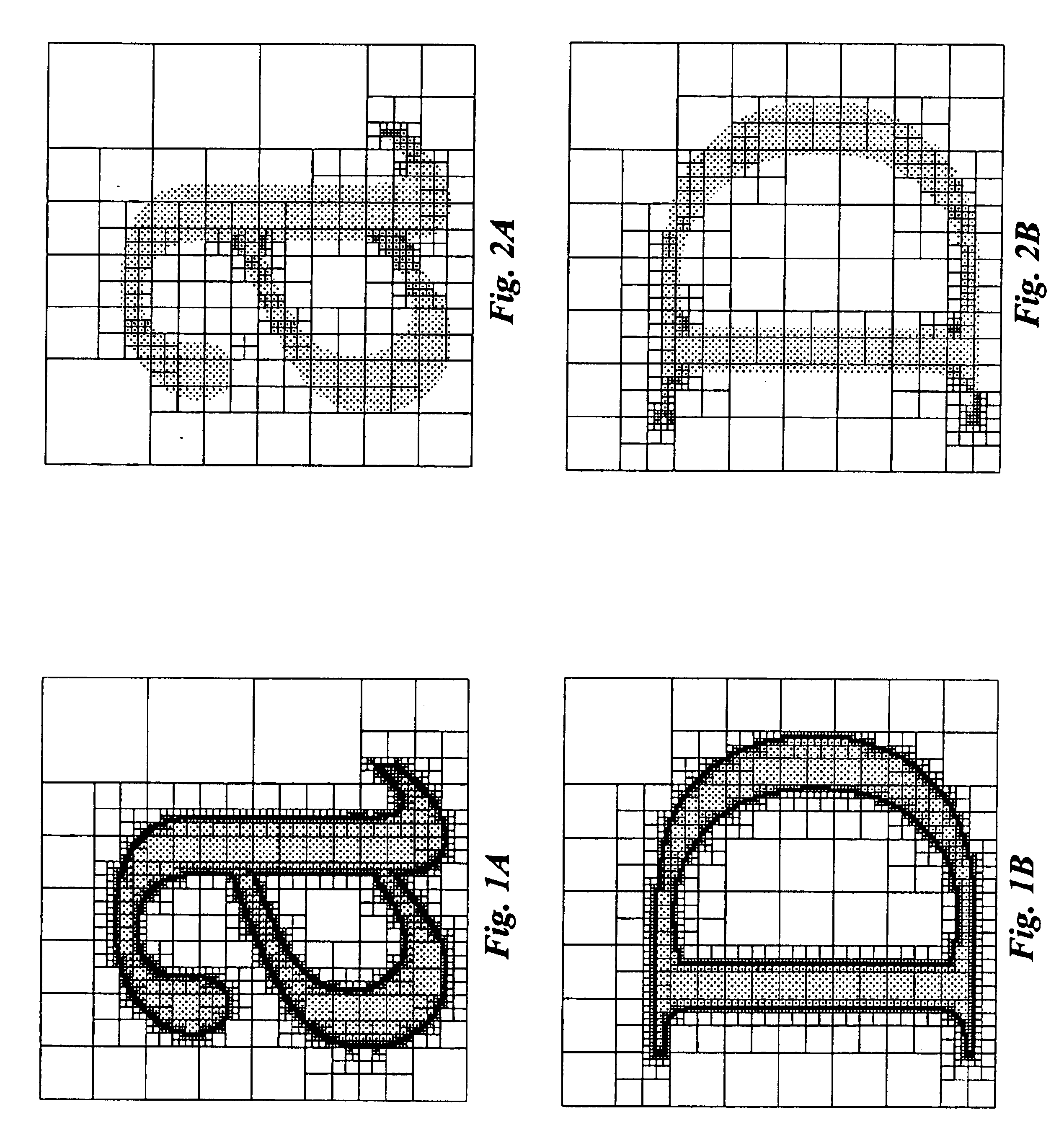Method and apparatus for rendering cell-based distance fields using texture mapping
a technology of texture mapping and distance field, applied in the field of computer graphics, can solve the problems of hardware support forcing compromises during software rasterization, the complexity of interpreting hinting rules preventing hardware font rendering, and the main bottleneck in the hinting process
- Summary
- Abstract
- Description
- Claims
- Application Information
AI Technical Summary
Benefits of technology
Problems solved by technology
Method used
Image
Examples
Embodiment Construction
[0067]Distance Field Representation of Glyphs
[0068]Our invention represents a closed two-dimensional shape S, such as a glyph, a corporate logo, or any digitized representation of an object, as a two-dimensional signed distance field D. For the purpose of our description, we use glyphs.
[0069]Informally, the distance field of a glyph measures a distance, e.g., a minimum distance, from any point in the field to the edge of the glyph, where the sign of the distance is negative if the point is outside the glyph and positive if the point is inside the glyph. Points on the edge have a zero distance.
[0070]Formally, the distance field is a mapping D:2→ for all p∈2 such that D(p)=sign(p)·min{∥p−q∥: for all points q on the zero-valued iso-surface, i.e., edge, of S}, sign(p)={−1 if p is outside S, +1 if p is inside S}, and ∥·∥ is the Euclidean norm.
[0071]Prior art coverage-based rendering methods that use a single discrete sample for each pixel or for each pixel component can completely miss t...
PUM
 Login to View More
Login to View More Abstract
Description
Claims
Application Information
 Login to View More
Login to View More - R&D
- Intellectual Property
- Life Sciences
- Materials
- Tech Scout
- Unparalleled Data Quality
- Higher Quality Content
- 60% Fewer Hallucinations
Browse by: Latest US Patents, China's latest patents, Technical Efficacy Thesaurus, Application Domain, Technology Topic, Popular Technical Reports.
© 2025 PatSnap. All rights reserved.Legal|Privacy policy|Modern Slavery Act Transparency Statement|Sitemap|About US| Contact US: help@patsnap.com



